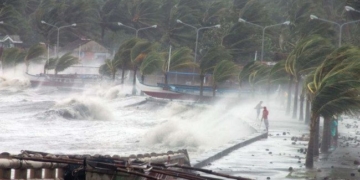Diamonds are among the most valuable minerals in the world, and Africa is the destination for those seeking these precious “gems.”
Africa is often referred to as the “dark continent” due to the many mysteries lying beneath it, one of which is the wealth of diamonds.
These diamonds are commonly known as “blood diamonds” because they are a source of violence and conflict affecting the lives of many people in the region.
Strangely, despite Africa’s wealth in diamonds, the continent is economically impoverished.
The Abundance of Diamonds in Africa
Africa is extremely rich in diamond reserves, with several countries on the continent being among the world’s top diamond producers.
It is estimated that Africa produces about two-thirds of the world’s diamond supply, primarily concentrated in countries like Botswana, South Africa, Angola, and the Democratic Republic of the Congo.

Diamonds are partly responsible for the conflict and violence in the lives of African people (Illustrative photo: Science ABC).
Despite the abundance of diamond mines, their extraction and trade often lead to deadly conflicts and human rights violations.
All of this reflects the dark side of diamond wealth in Africa.
The dark continent has a vast geological history that contributes to the richness of this mineral.
Tectonic activity has played a crucial role in the formation of diamonds.
Specifically, tectonic plates that make up the Earth’s crust move around the planet over time (at a very slow pace), resembling puzzle pieces.
When they collide, it’s like a clash of giants, creating spectacular mountains that rise from the sea or triggering volcanic eruptions.
Notably, this activity has also created ideal conditions for diamond formation, concentrated in the southern and central regions of Africa.
Diamond Formation is Like Baking
Diamonds form deep within the Earth’s mantle, where high temperature and pressure cause carbon to crystallize into diamond structures.
These diamonds are then transported to the Earth’s surface through pipes known as kimberlite pipes.
These volcanic pipes carry magma and diamonds to the surface. Kimberlites are volcanic rocks rich in magnesium, potassium, and other elements necessary for diamond formation.
As magma rises from deep within the Earth and erupts on the surface, these pipes form.
The process of diamond formation is similar to baking. The Earth’s mantle acts like an oven, while carbon-rich magma serves as the cake batter.
The high temperature and pressure in the Earth’s mantle are akin to oven heat, causing carbon to crystallize into diamonds just like how cake batter is baked and solidified.
Kimberlite pipes function similarly to oven doors, bringing diamonds to the surface like a baker opening the oven to retrieve a cake.
Eventually, erosion and weathering wear away surface layers over millions of years, exposing diamonds.
Diamonds are then mined and processed into beautiful gemstones known and loved worldwide.
It is incredible to think that Africa is so rich in diamonds, as if the Earth has gifted this continent a precious treasure.
Yet, despite this wealth of rare minerals, Africa remains deeply impoverished.
It’s akin to having a stunning diamond necklace that holds no value in purchasing food or shelter.
However, it is important to understand that the diamonds themselves are not the issue; rather, it is the greed and violence of those who mine them.
Africa’s diamond wealth is the result of millions of years of complex geological processes that have shaped the continent, while their extraction has led to conflict and poverty.


















































